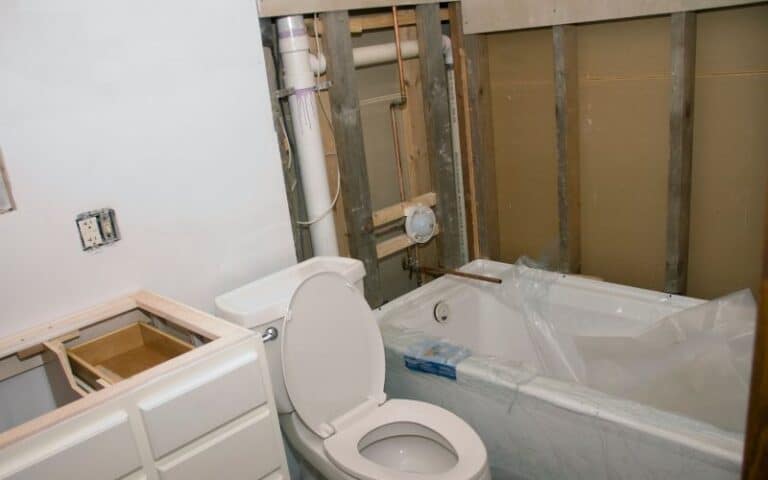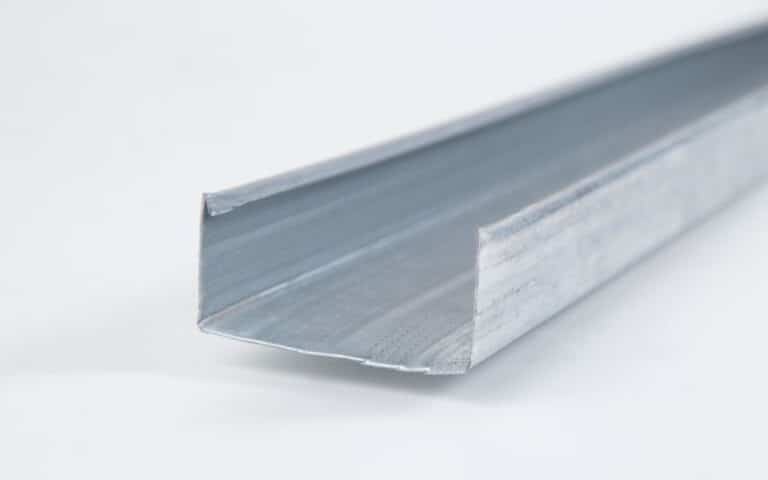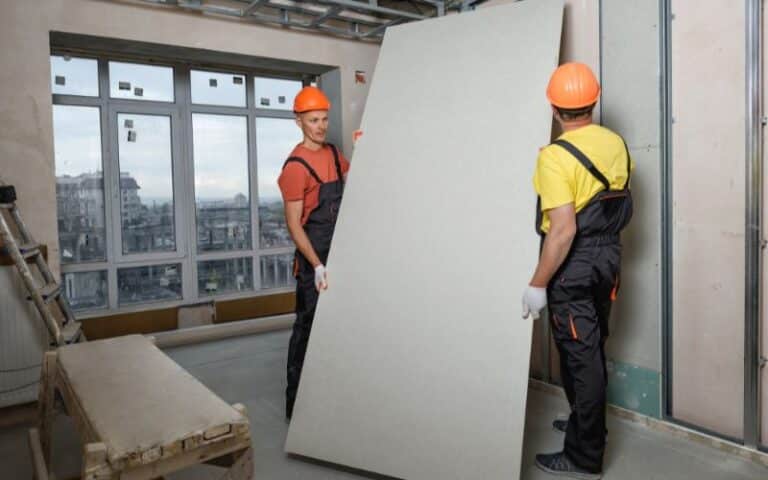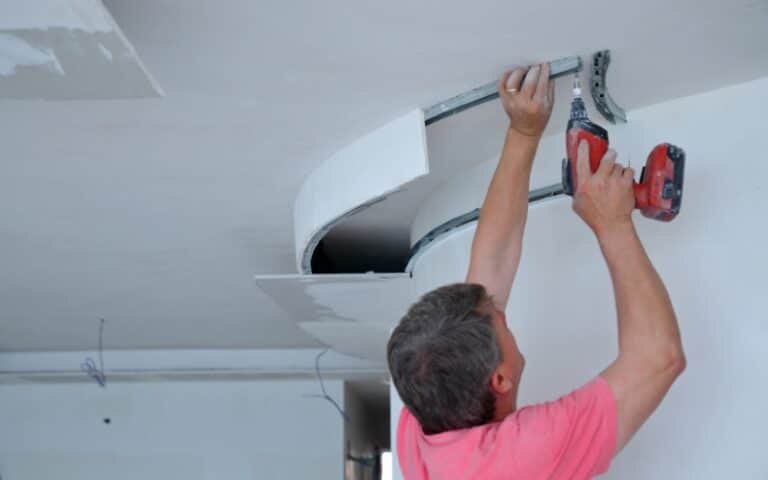Matching drywall of different textures can be difficult, especially if you’re patching drywall.
You have to consider several factors before matching ⅝ drywall boards with ½ drywall boards.
Most contractors for drywall often pair these two gypsum boards together. But is this the best option for a building?
Matching a ⅝ drywall to a ½ drywall board has its merits. Since both boards absorb sound, you should expect reduced noise when installed. Most builders put ⅝ drywall boards on ceilings and ½ boards on walls in residential houses. However, matching these in commercial buildings isn’t advised since these buildings require stronger materials.
These drywall boards may be popular among constructors, but what about you, the homeowner?
You don’t have to worry about that; this article covers these drywall boards’ importance and compatibility.
Ready for a Drywall Quiz?
Is 5/8 Drywall Compatible With 1/2?
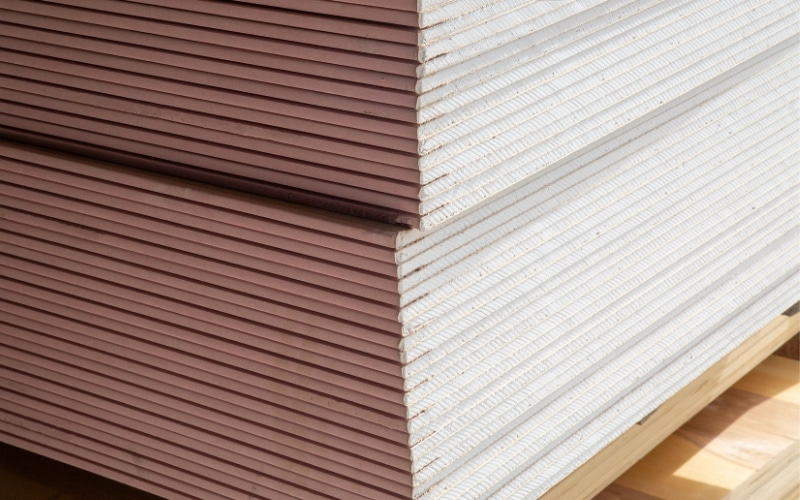
Yes. A ⅝ inch of drywall is very compatible with a ½ inch of drywall board.
However, you have to consider certain things. For example, a ⅝ inch drywall board absorbs more sound and is a better insulator.
Hence, certain areas of the room might have different properties. For instance, the sound absorption will be lower when you install a ½ inch drywall board.
You may notice little difference if you don’t require a quiet room to work. However, you will notice the difference if you want to create a soundproof workspace.
If you work remotely, you require a highly soundproof environment to help you hone your senses better. In that case, the ⅝ drywall boards should populate the construction.
You can also use ½ drywall boards in areas that aren’t as sensitive.
On an aesthetic level, there isn’t much difference between the ½ drywall board and the ⅝ drywall board. However, the finishing on the ⅝ boards is better.
The ⅝ drywall boards may have better finishing, but you won’t notice the difference.
Since ⅝ drywall boards are far more expensive, you can dabble a little with both boards.
It is common for builders to mix both gypsum boards to minimize cost. However, safety, durability, and insulation become the primary factors for commercial buildings.
Hence, you won’t find them putting so much of ½ boards in the mix. Furthermore, in residential houses, noise reduction may be an unnecessary luxury for certain house owners.
Thus, they won’t mind using ½ drywall boards for their walls with a little mix of ⅝ boards.
However, it is quite the contrary in a commercial setting. Since there will be a lot more noise in these buildings, ⅝ boards are most suitable for use.
Furthermore, in the case of repairs, you can use ½ drywall boards to patch up a spoilt area of the wall quickly.
You can do this instead of taking down the entire wall, filling up holes in the wall, and painting it all over again.
You can place a piece of ½ drywall board on the spoilt region; it won’t put much strain on the board underneath it since it is lighter.
Can You Use 5/8 Drywall With 1/2?
Yes, especially if you’re thinking of soundproofing your walls. The type of board you decide to go with depends on the soundproofing you need for your walls.
However, the type of drywall you use will affect the room’s soundproofing. Hence, you should conduct in-depth research on which drywall to use to eliminate noise in your apartment or office.
If you examine houses that use drywall for soundproofing, you’ll notice that most use ⅝ drywall boards for ceilings and ½ drywall boards for walls.
The primary reason is the cost you will bear while putting up these boards. Hence, constructors have found a way to balance out the equation.
They use tougher boards for ceilings and lighter ones for walls. Furthermore, ⅝ drywall is also much smoother than ½ drywall boards.
⅝ boards give a better finish and are a more durable soundproofing option.
If you decide to go for ⅝ boards all over, the cost difference is about $300. However, do note that this estimate will vary from contractor to contractor.
Despite the price difference, you will see the results in finishing and sound difference.
Since regular ⅝ inch sheets are heavier than ½, you can buy a ⅝ board sheet that is almost 30% lighter.
The USG UltraLight Firecode Tapered Edge Gypsum Board is a good alternative to the standard ⅝ inch type X panels.
The USG UltraLight drywall panels are viable if weight is a major factor for you. These panels give you a lighter ⅝ drywall sheet without compromising performance or appearance.
What Are the Best Places to Use USG Ultralight Drywall?
If your constructor wants to use ⅝ drywall boards for certain areas instead of ½ to improve strength, the USG UltraLight Drywall panels are the best to use in such situations.
Constructors use these boards for high-end custom homes. They also use these boards for commercial construction on steel studs.
Ultra Light drywall boards are a viable choice if you want to remodel an office. The office rooms don’t have to be fire rated if there are partitions between the offices.
Furthermore, these boards are better to install as they are smaller, and they reduce the time and labor required to fix them.
How Do You Combine 5/8 Drywall With 1/2?
The most common combination between a ⅝ drywall and ½ is in ceilings and walls. Some constructors put ⅝ as ceilings and the ½ drywall as walls.
However, it is important to remember that this combination varies from constructor to constructor.
Furthermore, the room’s purpose dictates the drywall the constructor will install.
⅝ inch walls do better when it comes to water resistance than its counterpart. Hence, it is the ideal board to use for your ceiling.
In addition, the ⅝ inch drywall has a better record against fire risks. Thus, construction workers prefer installing it as the ceiling of a building.
Since cost is always a major issue, constructors always work to minimize costs. For example, the cost of installing a ⅝ drywall sheet around your house is higher than that of the ½ drywall board.
Hence, they would always recommend the ⅝ for ceilings if you can’t afford to put it on all the walls in your house.
In addition, you should use thicker drywall panels if they’re large gaps between the studs and joists.
Furthermore, you might also want to consider that ½ inch drywall isn’t suitable for all buildings.
For example, ½ inch drywall boards are only compatible with residential buildings, not commercial ones. Hence, several factors influence the combination of ⅝ drywall with ½.
What Is the Actual Thickness Of 1/2 Drywall?
The actual thickness of a ½ drywall is 12.7mm. Sometimes, the thickness varies, and the drywall may come in 12mm. However, the accepted thickness of ½ drywall is 12.7mm.
Comparing the thickness of the ½ drywall and the ⅝ drywall, they vary to some point.
Most constructors will tell you that a ⅝ drywall is better because it is thicker and brings more to the structure.
The generally accepted thickness of a ⅝ drywall is 15mm. Hence, it makes walls and ceilings more rigid and reliable.
Furthermore, it reduces sagging in-ceiling frames because it is more water-resistant than ½ drywall panels.
Below is a table that best shows the advantages and disadvantages of using ½ drywall boards:
| Pros | Cons |
|---|---|
| Compatible for residential areas | Not suitable for commercial use |
| Less expensive | Low insulation |


